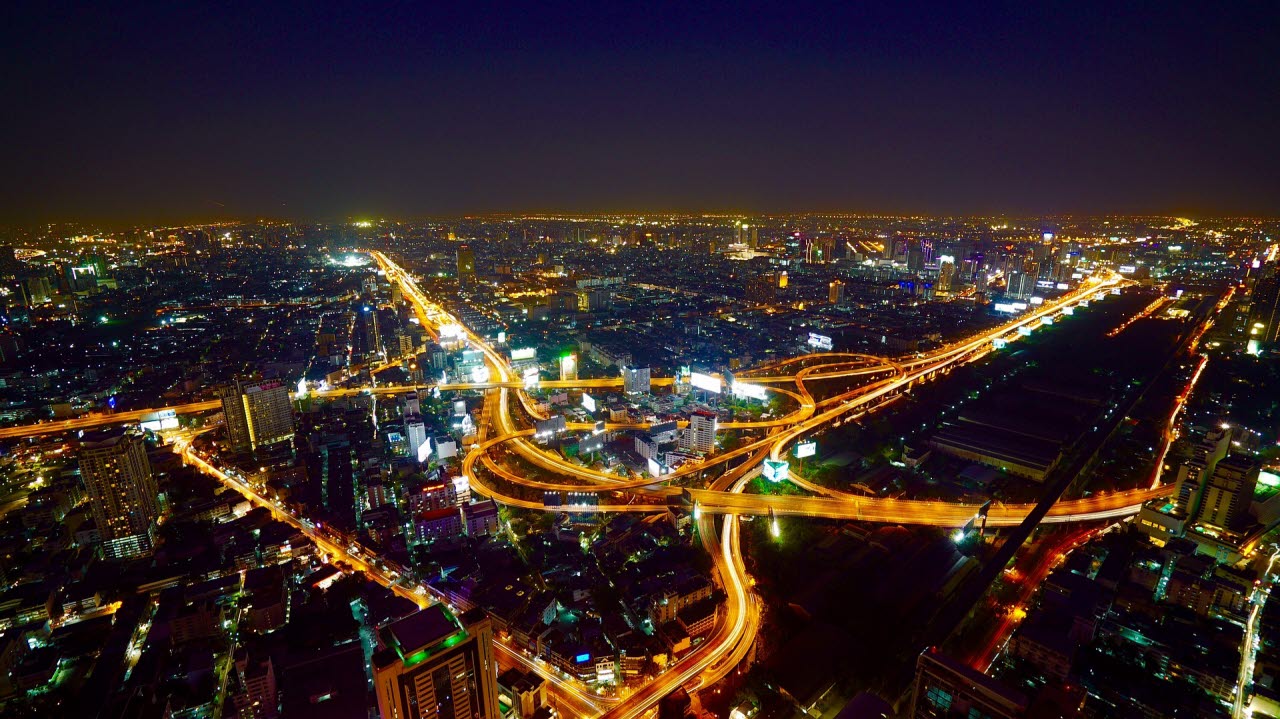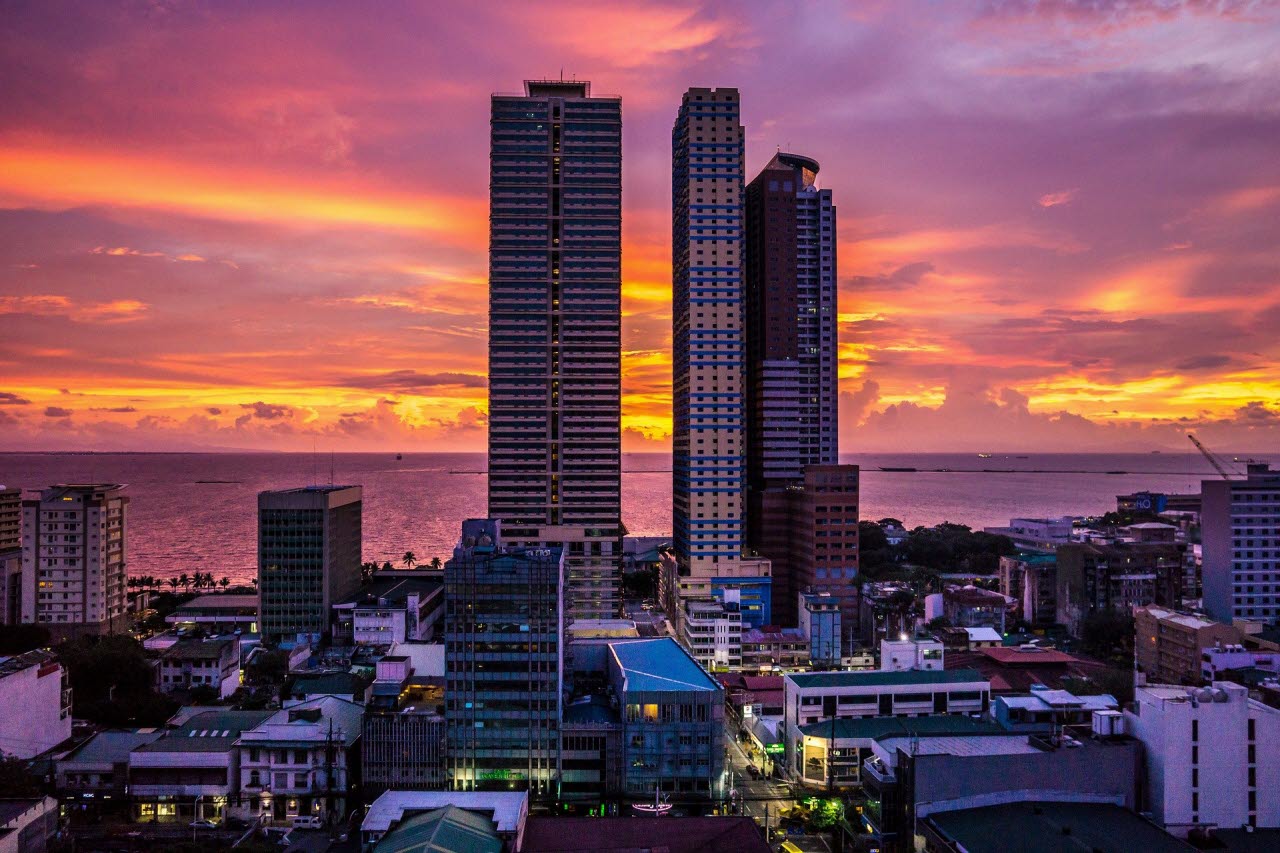Traffic congestion is notoriously bad in some developing Asian countries. Indeed, according to satellite navigation company TomTom, the region is home to some of the worst cities in the world for congestion: Jakarta is seventh worst; Bangkok eighth; New Delhi fourth; and Mumbai top of the list as the worst of all. And it’s a problem that is symptomatic of a larger difficulty in the region: the rise of the dominant megacity.
Mumbai aside, all the cities mentioned above are national capitals that politically, economically and socially dominate their country – and it is becoming clear that it may be beneficial to share some of their wealth elsewhere in their respective countries, diversifying key functions from overcrowded capitals to smaller cities or even the countryside. But could such a transfer of national capital, as well as human and fiscal capital, work? If so, how?
It may be essential. In December 2019, Typhoon Kammuri ripped through the Philippines, causing the evacuation of 457,000 people from southern Luzon near Manila, and the islands immediately south. The storm was blamed for 17 deaths. Although the capital avoided a direct hit, Manila’s airport was closed for 12 hours, parts of the city flooded, and events at the Southeast Games had to be postponed.
As New Year’s Day dawned in Jakarta, the heaviest rains on record to hit the city caused flash floods that killed 53 people. More than 400,000 residents, mainly from the Jakarta satellite city of Bekasi, fled their homes. Officials blamed climate change for raising the risk of extreme weather and said rains could continue until mid-February.
One of the main problems diversification of key functions would hope to address is the rural-urban divide, one of the main factors perpetuating a cycle of poverty in many emerging Asian nations. The divide and inter-provincial gaps account for 54% of income inequality in China, and about 32% in India. And things are getting worse, says Haruhiko Kuroda, former president of the Asian Development Bank (ADB) and current governor of the central Bank of Japan, which is preventing Asian governments from raising disadvantaged people out of poverty.

Dominant cities such as Bangkok and New Delhi have seen a rise in traffic congestion in respective developing Asian countries
“High and rising inequality can undermine long-term growth by wasting human capital, increasing social tension, weakening governance and increasing pressure for inefficient populist policies,” says Kuroda.
“Because the forces behind rising inequality are also the engines of productivity and income growth, options to reverse these trends become more complex,” he explains. “Disadvantaged regions must be provided with better infrastructure, not just in the form of better connectivity but also through policies and institutions that ease the flow of goods and services. Barriers to migration from poor and rural to more prosperous and urban areas should also be removed.”
Asia’s rapid development is producing leaps in technological progress, increasingly integrated financial and economic markets, and greater market orientation – all of which favour urban dwellers, and often magnify inequalities in human capital. Spreading the financial gains of these trends from capital owners to labour, and bringing job, education, health and social-service benefits to all parts of a nation will help ensure that wealth creation in Asia is more inclusive.
It is possible to create a capital from scratch. Brasilia was founded in 1960 to shift Brazil’s capital to a more central location than Rio de Janeiro. Nur-Sultan, formerly Astana, was installed as the capital of Kazakhstan in 1997 to diversify away from the largest city, Almaty, 1,000km away. And Australia created Canberra, with the proviso that the capital be more than 100 miles (160km) away from Sydney, the country’s biggest city.
Myanmar also shifted its capital, from Yangon to Naypyidaw, “the abode of kings” in 2006. Naypyidaw is in the centre of the country and Yangon is prone to flooding: Cyclone Nargis caused more than 100,000 deaths in 2008. However, Naypyidaw is a relative ghost town, a new suburb four times the size of London, tacked on to a town of 100,000 people.
“Manila was found to be sinking by around 2.5 inches per year between 2003 and 2018. Like Jakarta, the extensive extraction of groundwater is largely to blame. To make matters worse, suburbs such as densely populated Quezon City and upscale Makati lie on earthquake fault lines.”
Indonesia has confirmed that it will also move its capital. On winning his second term in August 2019, president Joko Widodo confirmed that the capital will shift to a new city to be built near the port of Balikpapan, on the east coast of Borneo.
The project’s budget is $33bn, which seems extremely low, only 19% of which will come from government. It’s hoped the rest will come from public-private partnerships. Construction is slated to start in 2021, with parts of the government moving by 2024.
Moving the capital should ease the stress on Jakarta, which is due to replace Tokyo as the world’s most-populous city by 2030. It should also spread the wealth in a nation where Jakarta’s island, Java and next-door Sumatra account for 59% and 22% of the economy respectively.
Jakarta will remain the financial capital of Indonesia, the fourth-largest nation in the world at 263 million people. Jakarta will retain functions like the stock market, while politicians and government departments will shift to the yet-to-be-named new city.
Balikpapan is located centrally within a nation of 17,000 islands. Crucially, Borneo is not volcanic and therefore not as prone to earthquakes, tsunamis and eruptions as the rest of the island chain. It is also not sinking, while parts of Jakarta are dipping 8 inches per year thanks to wells drawing from aquifers in the city’s swampy surrounds. Some 40% of the capital is already below sea level, and during the typhoons and tropical storms that sweep the region, much of the city floods.
The deluge that caused chaos in January was the heaviest rainfall since records began in 1866. But it’s the third such major flooding incident in the last 12 years.
“Indonesia has confirmed that it will also move its capital. The project’s budget is $33bn, only 19% of which will come from government. It’s hoped the rest will come from public-private partnerships. Construction is slated to start in 2021, with parts of the government moving by 2024. ”
Jakarta has a population of 10 million. But greater Jakarta, spanning several surrounding cities, tops 30 million now. That tally should reach 35.6 million as the conurbation adds 4.1 million people between now and 2030, according to Euromonitor. Greater Tokyo, with an ageing populace, should dip by 2 million to 35.3 million over the same period.
Now Thailand, too, is mulling the move of its capital. Prime minister Prayut Chan-o-cha, announced in September last year that the capital could switch under his watch. He has two options: a move to the Bangkok suburbs to ease congestion in the city centre; or a switch to another city that’s “neither too far nor too expensive to move to.”
Former prime minister Thaksin Shinawatra also suggested switching the administrative capital during his tenure. Shinawatra, who drew much of his support from rural constituents, wanted to move the capital to Nakhon Nayok, an agricultural province 100km north-east of the capital, nearer his base. The government has also explored a move to Chachoengsao, an agricultural hub 80km due east of Bangkok.
In 2018 two legislators in the Philippines filed a bill advocating moving the capital from Manila to Davao City, hometown of president Rodrigo Duterte. Although his supporters say the move is to “address the issue of Manila imperialism,” they also have in mind to decongest Metro Manila and spur development in other parts of the fragmented island nation.

Manila is another city that is overpopulated and prone to disaster; options are being fielded for an alternative capital
Manila was found to be sinking by around 2.5 inches per year between 2003 and 2018. Like Jakarta, the extensive extraction of groundwater is largely to blame. The aquifer reserves are being used at a faster rate than nature can replace them. This puts some 40% of Metro Manila’s 12.9 million people at risk of flooding. To make matters worse, suburbs such as densely populated Quezon City and upscale Makati lie on earthquake fault lines.
Rodrigo Narod Eco, author of a University of the Philippines report on land subsidence, says this merits as much attention as an earthquake or volcanic eruption. “This is a slow-onset disaster that could stretch out for weeks, months, or even years,” he told the publication Eco-Business.
His co-author Mahar Lagmay, head of the Resilience Institute at the University of the Philippines, says Manila “seems like a dying city.” Overpopulation makes it disaster-prone and difficult to manage. The southern island of Mindanao is a strong candidate for a relocated capital, Lagmay says. It would facilitate trade with neighbouring Indonesia and the rest of Southeast Asia.
Should Indonesia’s attempt to spread wealth in a more equitable way be a success, it is highly likely that the Philippines and other countries will follow suit.

